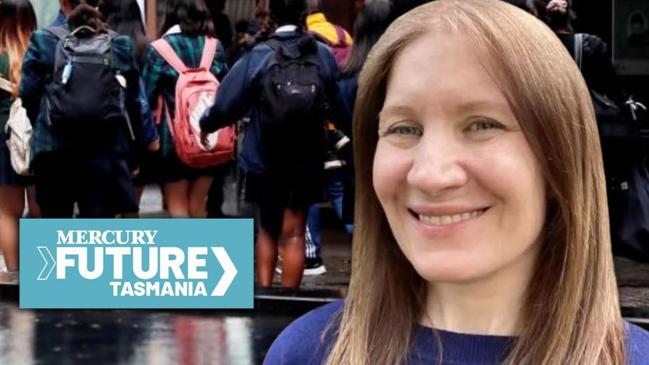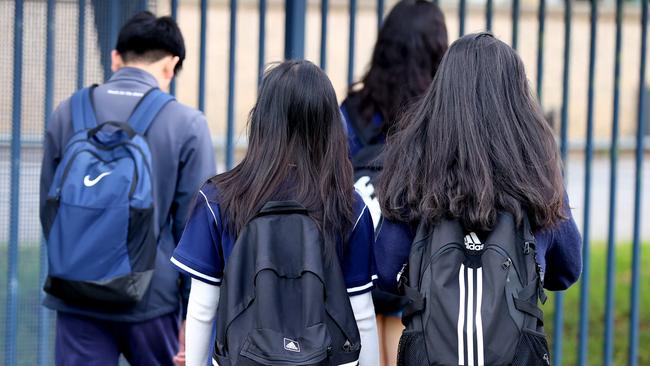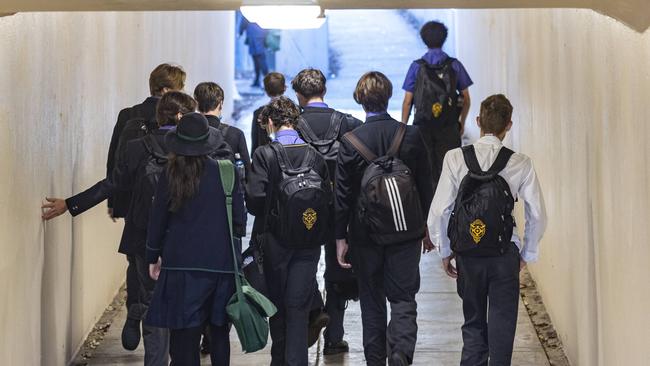Regional, rural employment likely to be driven by health, social services, construction, scientific sectors
Tasmania’s schools of the future will need to combine previously “siloed” subjects and offer “bespoke” learning options to combat the state’s dreaded brain drain, education gurus say. DETAILS >

News
Don't miss out on the headlines from News. Followed categories will be added to My News.
TASMANIA’S schools of the future will need to combine previously “siloed” subjects and offer “bespoke” learning options to combat the state’s dreaded brain drain, education gurus say.
It’s predicted that regional and rural employment is likely to be driven by new and emerging occupations in the health and social services sectors, construction, agriculture and scientific and technical services in the coming decades.
Tasmania is classified as regional or remote under the Australian Standard Geographic Classification.
The 2019 National Regional, Rural and Remote Tertiary Education Strategy underlined that regional and remote Australians were half as likely as their metropolitan counterparts to obtain a university qualification due to a lack of access to higher education.
Sharon Fraser, Professor in Science Education at the University of Tasmania, said the occupations of the future would require a mix of “hi-tech skills” and “broad capabilities”, including communication and teamwork, analytical and critical thinking, reasoning and complex problem-solving, creativity, resilience and flexibility, empathy and emotional intelligence.
“Skills in the latter list have often been overlooked, but are well-recognised as essential skills for all workers now and in the future,” Prof Fraser said.

Dr Connie Cirkony, a lecturer in Science Education at UTAS, has called for an ambitious rethink of how education is delivered in Tasmania.
“Based on … global directions, students will likely experience more courses that combine previously siloed subjects, integrate different cultural perspectives, and collaborate with their community, for the purpose of understanding and solving real-world issues,” she said.
“The world has and always will be changing – our education systems need to keep up to ensure future generations are ready.”
Tasmania’s population is four years older than the national average at 42. According to the 2021 Census, there was a positive increase in the 25-39 age group as at June 30, 2021, compared to June 30, 2016, growing by about 25,000 people.
Offsetting the state’s longstanding brain drain, the increase has been attributed to increased domestic and international migration and younger Tasmanians choosing to stay and work in the state and raise a family.
The biggest growth occupations in Tasmania from 2016-2021, according to the 2021 Census, were aged or disability carers, teachers’ aides, carpenters, chefs, and general clerks, while the biggest growth industries were hospitals (except psychiatric hospitals), cafes and restaurants, house construction, electricity distribution and primary education.

Dr Stephanie Richey, a lecturer in Curriculum Studies (Primary) at UTAS, said the state needed to promote access and opportunity for young people in order to retain them.
“Offering bespoke educational opportunities can go a long way in making education accessible for non-traditional learners,” she said. “In today’s financial climate, many students balance full or part-time work and study and cannot attend classes during business hours.”
“Although online learning is now ubiquitous, there are still practical requirements for many degrees.”
Dr Richey said that increasing access and opportunity would “create ‘brain gain’” by enticing more young people to come to Tasmania to study.
“This could be done by offering more fast-tracked degrees so learners can enter the workforce sooner, and partnerships with industry to offer opportunities which can lead to job guarantees,” she said.
“This leads to … [another] interwoven approach, which is to incentivise remaining in (or returning to) Tasmania to work – for our ‘homegrown’ young people, our ‘brain gain’ students … who could be enticed to return.”

As at 2012, just 52.8 per cent of Tasmanian men and 46.9 per cent of Tasmanian women possessed an OECD literacy level of three or above.
Tasmanian Council of Social Service acting CEO, Dr Charlie Burton, said literacy was an “equity issue” and correlated with lower incomes and other indicators of disadvantage.
“Improving literacy levels in Tasmania would improve people’s ability to navigate daily life, whether it’s simple things like texting your family or comparing prices on grocery shelves, or more complex things like responding to job advertisements,” he said.
Dr Burton said improved literacy rates would also lead to better health outcomes.
“Even with a solid grasp of the basics of language, a lot of Tasmanians don’t have the knowledge, resources or confidence to look after their and their family’s health, or navigate the health system,,” he said.
TasCOSS is calling on the state government to increase investment into digital literacy skills through a “community-based network of coaches and peer workers” to support priority groups with low literacy and numeracy.
Demographer Bernard Salt said it was promising that Tasmania had experienced an influx of young people moving to the state in the five years to 2021.
“It’s a question of how we can actually foster the entrepreneurship and the energy and the capabilities of those people coming home or seeking refuge in the state,” he said.


